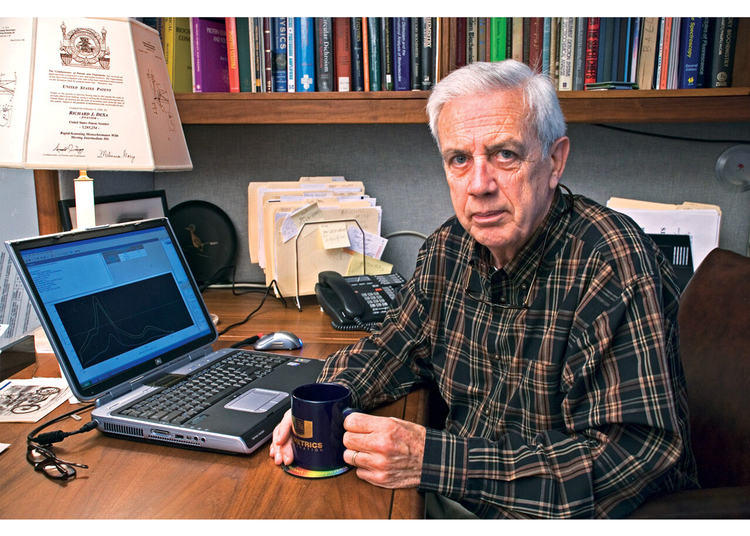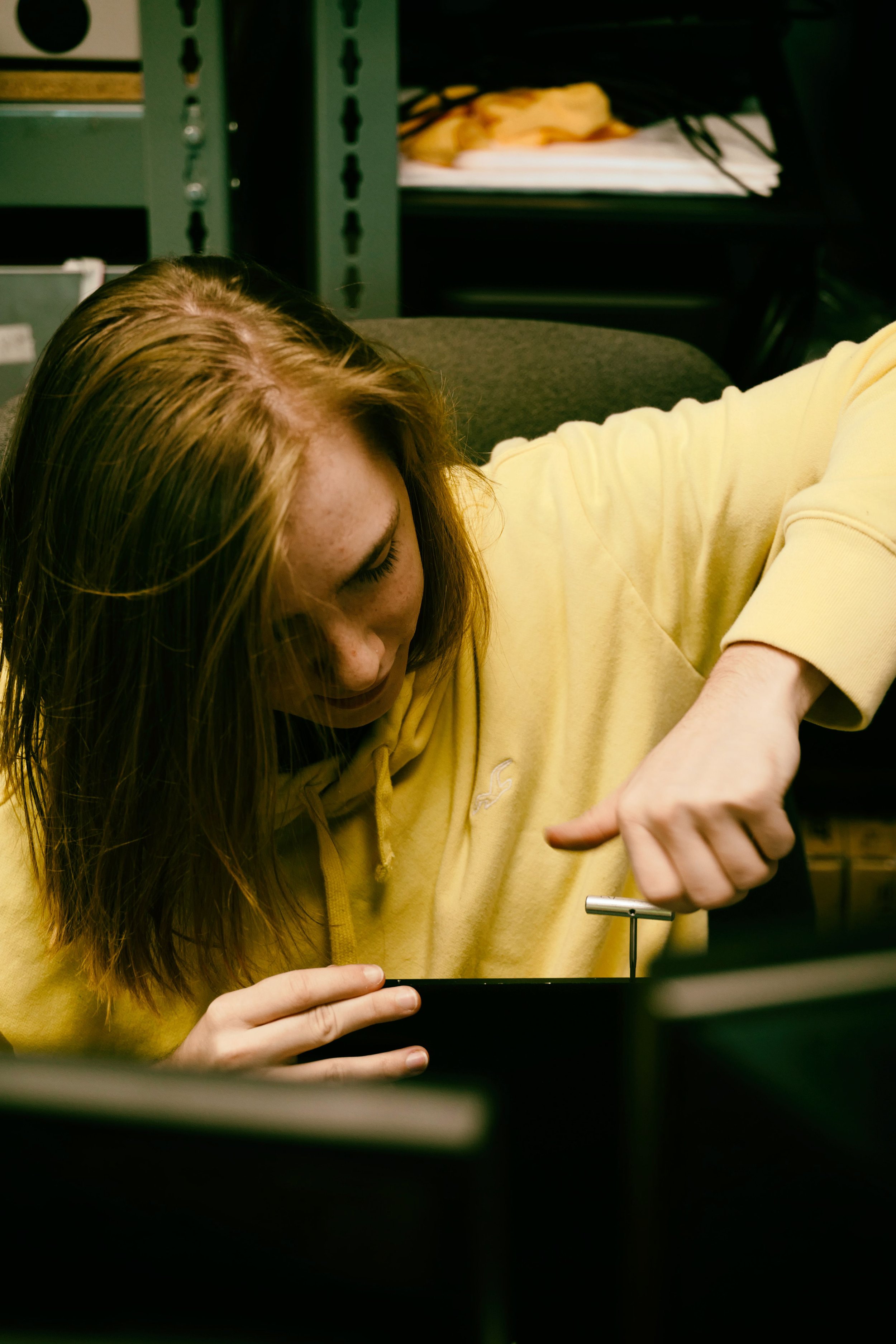Some Ideas on Uv/vis You Should Know
Wiki Article
Everything about Circular Dichroism
Table of ContentsCircular Dichroism - QuestionsLittle Known Questions About Circularly Polarized Luminescence.How Uv/vis can Save You Time, Stress, and Money.Uv/vis/nir Fundamentals ExplainedFacts About Uv/vis UncoveredFascination About Circularly Polarized LuminescenceAll about Circular DichroismLittle Known Questions About Circular Dichroism.An Unbiased View of Uv/vis/nirThe Of Circular DichroismUv/vis/nir Things To Know Before You BuyFacts About Uv/vis UncoveredThe 10-Second Trick For Circularly Polarized Luminescence
It is then scanned through the sample and the recommendation solutions. Portions of the incident wavelengths are transferred through, or shown from, the sample and the reference. Electronic circuits transform the relative currents into linear transmission portions and/or absorbance/concentration values.The transmission of a referral compound is set as a standard (information) worth, so the transmission of all other substances are tape-recorded relative to the preliminary "zeroed" compound. The spectrophotometer then transforms the transmission ratio into 'absorbency', the concentration of particular parts of the test sample relative to the preliminary compound.
Since samples in these applications are not readily offered in large quantities, they are especially fit to being evaluated in this non-destructive strategy. In addition, precious sample can be saved by utilizing a micro-volume platform where just 1u, L of sample is required for complete analyses. A brief explanation of the treatment of spectrophotometry includes comparing the absorbency of a blank sample that does not consist of a colored compound to a sample which contains a colored compound.
The Greatest Guide To Uv/vis/nir
In biochemical experiments, a chemical and/or physical residential or commercial property is chosen and the treatment that is utilized specifies to that property in order to derive more info about the sample, such as the amount, purity, enzyme activity, etc. Spectrophotometry can be utilized for a number of techniques such as figuring out ideal wavelength absorbance of samples, figuring out optimum p, H for absorbance of samples, determining concentrations of unidentified samples, and determining the p, Ka of numerous samples.: 21119 Spectrophotometry is likewise a handy procedure for protein filtration and can likewise be utilized as a technique to develop optical assays of a compound.It is possible to understand the concentrations of a 2 part mixture using the absorption spectra of the basic options of each component. To do this, it is required to know the termination coefficient of this mixture at two wave lengths and the termination coefficients of services that consist of the recognized weights of the two elements.

Some Of Circular Dichroism
Area. The concentration of a protein can be approximated by measuring the OD at 280 nm due to the existence of tryptophan, tyrosine and phenylalanine.Nucleic acid contamination can also interfere. This method requires a spectrophotometer efficient in determining in the UV area with quartz cuvettes.: 135 Ultraviolet-visible (UV-vis) spectroscopy involves energy levels that delight electronic shifts. Absorption of UV-vis light thrills molecules that are in ground-states to their excited-states. Noticeable region 400700 nm spectrophotometry is used extensively in colorimetry science.
20. 8 O.D. Ink manufacturers, printing business, textiles suppliers, and much more, require the data supplied through colorimetry. They take readings in the area of every 520 nanometers along the visible area, and produce a spectral reflectance curve or a data stream for alternative presentations. These curves can be used to evaluate a new batch of colorant to examine if it makes a match to specs, e.
Circularly Polarized Luminescence Fundamentals Explained
Conventional visible region spectrophotometers can not spot if a colorant or the base material has fluorescence. This can make it hard to handle color problems if for example several of the printing inks is fluorescent. Where a colorant consists of fluorescence, a bi-spectral fluorescent spectrophotometer is utilized (https://soundcloud.com/julieanndesalorenz30606). There are 2 major setups for visual spectrum spectrophotometers, d/8 (spherical) and 0/45.Researchers utilize this instrument to measure the quantity of compounds in a sample. If the substance is more focused more light will be taken in by the sample; within little varieties, the Beer, Lambert law holds and the absorbance in between samples vary with concentration linearly. When it comes to printing measurements two alternative settings are frequently utilized- without/with uv filter to control much better the effect of uv brighteners within the paper stock.
Some Of Spectrophotometers
Some applications need little volume measurements which can be performed with micro-volume platforms. As explained in the applications area, spectrophotometry can be utilized in both qualitative and quantitative analysis of DNA, RNA, and proteins. Qualitative analysis can be utilized and spectrophotometers are utilized to tape-record spectra of substances by scanning broad wavelength areas to determine the absorbance residential or commercial properties (the intensity of the color) of the substance at each wavelength.
Uv/vis/nir Things To Know Before You Get This
One major element is the kind of photosensors that are readily available for different spectral regions, however infrared measurement is likewise tough since practically everything discharges IR as thermal radiation, specifically at wavelengths beyond about 5 m. Another complication is that quite a couple of products such as glass and plastic take in infrared, making it incompatible as an optical medium.Samples for IR spectrophotometry may be smeared between 2 discs of potassium bromide or ground with potassium bromide and pushed into a pellet. Where liquid solutions are to be determined, insoluble silver chloride is used to build the cell. Spectroradiometers, which operate nearly like the noticeable region spectrophotometers, are created to measure the spectral density of illuminants. Recovered Dec 23, 2018. Essential Lab Techniques for Biochemistry and Biotechnology (Second ed.). The vital guide to analytical chemistry.
Oke, J. B.; Gunn, J. E.
10 Simple Techniques For Uv/vis/nir

1021/ac50048a728. ISSN0003-2700. Ninfa AJ, Ballou DP, Benore M (2015 ). Fundamental Laboratory Methods for Biochemistry and Biotechnology (3, rev. ed.). Hoboken, NJ: Wiley & Sons. p. 77. ISBN9780470924525. OCLC915641828. "Completely Automatic Double Beam - Atomic Absorption Spectrophotometer (AA 8000)". Laboratory Devices. Labindia Analytical Instruments Pvt. Ltd. "Spectrophotometry Applications and Fundamentals".
The Facts About Spectrophotometers Revealed
"Applied Spectrophotometry: Analysis of a Biochemical Mix". Biochemistry and Molecular Biology Education. Journal of Biochemistry Education.The Single Strategy To Use For Circular Dichroism
U.S. Department of Commerce National Bureau of Standards special publication; 378. Washington, D.C.: U.S. National Bureau of Standards.The procedure begins with a controlled light source that lights up the evaluated sample. In the case of reflection, as this light engages with the sample, some is taken in or produced. The produced light travels to the detector, which is examined, quantified, and presented as industry-standard color scales and indices.
Industry governing bodies normally define particular metrics for particular products, such as Tomato and Coffee indices. The simplified math looks like this: Where R is the reflection coefficient. All terms are examined over the visible spectrum from 400 to 700 nm. In the case of transmission, when the light interacts with the sample, it is either soaked up, reflected, or transmitted.
Not known Incorrect Statements About Spectrophotometers
Examples consist of APHA (American Public Health Association) for watercolor and purity analysis, ASTM D1500 for petrochemical color analysis, edible oil indices utilized in food, and color analyses of drinks. All terms are evaluated over the noticeable spectrum from 400 to 700 nm.Image Credit: Matej Kastelic/ Dr. Arnold J. Beckman and his associates at the National Technologies Laboratories first developed the spectrophotometer in 1940. In 1935 Beckman founded the company, and the discovery of the spectrophotometer was their most ground-breaking development.
The smart Trick of Circularly Polarized Luminescence That Nobody is Discussing
Over time, scientists kept improving the spectrophotometer design to improve its performance. The UV capabilities of the model B spectrophotometer were enhanced by replacing the glass prism with a quartz prism.Usually, a spectrophotometer is made up of two instruments, particularly, a spectrometer and a photometer. A fundamental spectrophotometer contains a light source, a monochromator, a collimator for straight light beam transmission, a cuvette to put a sample, and a photoelectric detector.
Facts About Spectrophotometers Uncovered
There are various types of spectrophotometers in different shapes and sizes, each with its own function or functionality. A spectrophotometer identifies how much light is reflected by chemical parts. circularly polarized luminescence. It determines the difference in light strength based upon the total quantity of light introduced to a sample and the amount of light beam that travels through the sample solution
Based on the instrument's style, the sample is placed in between the spectrometer and the photometer. After the light is passed through the sample, the photometer measures its strength and shows the reading. A spectrophotometer is used to identify the concentration of both colorless and colored solutes in an option. This instrument is utilized to determine the rate of a reaction.
Report this wiki page